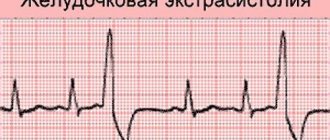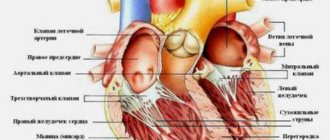Sepsis is the most severe, generalized form of the infectious process, which develops either with a high pathogenicity of the pathogen or with an insufficient response of the body's defense systems. International consensus recommends using the following definition: sepsis is a life-threatening dysfunction of internal organs caused by dysregulation of the body's response to infection. With sepsis, general intoxication syndrome, thrombohemorrhagic syndrome (hemorrhages) and damage to internal organs are observed.
- Causes of sepsis
- Types of sepsis
- The first signs and symptoms of sepsis
- Diagnosis of sepsis
- Stages of sepsis development
- Treatment of sepsis
- Complications of sepsis
- Prognosis for sepsis
Causes of sepsis
Sepsis can be caused by most microorganisms known in epidemiology, including bacteria, viruses (including seasonal influenza viruses), fungi, and parasites. Typically, the infectious agent enters the body from the external environment. Under certain conditions, for example, with immunodeficiencies, the disease can develop from the natural, opportunistic flora of the body, which is normally present in every person.
The presence of infection in itself does not guarantee the development of sepsis. Additional conditions are needed that will lead to generalization of the process and a pathological response of the body. The likelihood of such events increases in the following cases:
- The patient's age is over 75 years.
- Performing surgeries or invasive procedures.
- Presence of injuries and burns.
- Immune system disorders - AIDS, cancer, chemotherapy, the need to use immunosuppressive therapy (for example, after organ transplantation), the need to take high doses of glucocorticosteroids.
- Long-term treatment in a hospital setting.
- Availability of catheters, cannulas, probes and other invasive devices.
- Pregnancy and childbirth.
- Chemical dependence - alcoholism, drug addiction.
- The presence of chronic diseases - chronic renal failure, respiratory failure, diabetes mellitus and much more.
What is sepsis and what is not?
There is a difference between a normal infection and sepsis. The infectious process develops when viruses and bacteria enter the body and damage internal organs. The immune system begins to fight foreign agents, which is accompanied by the development of certain symptoms. Some infections are mild, while others are fatal. Cancer patients are at increased risk.
Sepsis is characterized by an overly violent reaction to microorganisms that have entered the body. This leads to damage to healthy tissue throughout the body, which can lead to dysfunction of internal organs and can cause death. In the case of systemic inflammatory response syndrome, cancer patients are also at increased risk.
Types of sepsis
Depending on the location of the primary source of infection, primary (cryptogenic) and secondary sepsis are distinguished. In primary cases, the source of infection cannot be determined. In secondary sepsis, such a focus is present. Depending on its location, there are:
- Percutaneous sepsis. The primary focus is on the skin; these can be wounds, burns, purulent skin diseases (purulent abscesses, boils, etc.).
- Odontogenic sepsis. The cause of its development can be caries, pulpitis, periodontitis, maxillary osteomyelitis and other diseases of the dental system.
- Otogenic sepsis. The primary focus is the inflammatory process in the ear. As a rule, these are purulent otitis media of the middle ear.
- Gynecological sepsis - the primary focus is located in the woman’s genital organs.
- Surgical sepsis - develops as a result of infection of a surgical wound or infection during invasive procedures.
Book a consultation 24 hours a day
+7+7+78
Prevention of sepsis
The main method of preventing sepsis is timely and correct treatment of infections that caused the development of primary foci.
The second important point is strict adherence to aseptic and antiseptic rules for conducting any medical operations.
The use of antibacterial agents must be competent. Viruses, fungi and microbes have the ability to adapt. Unjustified use of strong antibiotics leads to infections adapting, becoming smarter and becoming more difficult to fight. Self-medication should be excluded as a matter of principle. The best solution is to contact a specialist.
The first signs and symptoms of sepsis
Identifying the first signs of sepsis can be difficult, even for specialists. This is due to the fact that, firstly, this syndrome develops against the background of an existing pathology, which can have a wide variety of symptoms, and secondly, in the presence of immunodeficiency, the clinical picture can be erased. However, there are some symptoms that suggest the onset of sepsis:
- Increase or decrease in body temperature - above 38 and below 36 degrees.
- Pressure drop below operating value.
- Increased heart rate.
- Increased frequency of breathing movements (shortness of breath).
- Decreased amount of urine excreted.
- General weakness, exhaustion.
- Impaired consciousness or behavior.
Particular attention is paid to the occurrence of these signs in chronic patients, in the presence of leukopenia, cancer, and in patients who have undergone trauma or surgery. If at least 2-3 of these symptoms occur, you should immediately contact your doctor.
Complications
Complications of sepsis can be very serious.
- Septic shock - the functioning of all organs and systems is disrupted, blood flow and metabolism are disrupted. A special risk group among patients are people with weakened immune systems and the elderly. The mortality rate for this complication reaches 50%.
- Thrombophlebitis – inflammation of the venous walls occurs, which is accompanied by the formation of blood clots. The patient may experience pain in the affected areas of the veins, redness is noted on the skin and swelling of the extremities appears.
- Pulmonary embolism - in most cases develops as a complication against the background of thrombophlebitis. A part of the blood clot breaks off and travels through the blood currents, first to the heart, and then to the pulmonary vessels. Having reached a small vessel, the thrombus is able to block it. Symptoms can include shortness of breath, blueness of the fingertips, lips and nose, severe pain in the chest and behind the sternum, decreased blood pressure, loss of consciousness, fainting and even falling into a coma.
- Thromboembolism of cerebral vessels is also one of the complications of thrombophlebitis, in which part of the blood clot enters the brain. This complication is characterized by the detachment of a blood clot at night. Thromboembolism of this type is accompanied by a state of stupor and impaired consciousness in the patient, there is a violation of movements and sensitivity of reflexes, loss of orientation in time and space. The symptoms are somewhat similar to meningitis.
- Bleeding – as a result of vascular damage in various organs, areas of bleeding may open. The patient develops characteristic pallor and weakness.
- Loss of body weight - according to statistics, each patient suffering from this disease loses about 20% of his body weight.
Diagnosis of sepsis
Timely diagnosis of sepsis is crucial for the patient’s recovery. The earlier treatment is started, the greater the chances of success. The diagnosis is made on the basis of clinical examination and laboratory and instrumental examination.
Clinical criteria:
- Body temperature is more than 38 degrees or less than 36 degrees.
- Heart rate is more than 90 or exceeds the age norm.
- Respiration rate more than 20 times per minute.
- Presence of edema.
- Confusion.
- An increase in blood glucose levels of more than 7.7 µmol/l in the absence of diabetes.
- Disturbance of hemodynamic processes - a decrease in systolic blood pressure of less than 90 mmHg, or its decrease by more than 40 mmHg. from the usual meaning.
Laboratory criteria
A general blood test is performed with a leukocyte count and platelet count. In case of sepsis, leukocytosis is determined by more than 12*109/l or leukopenia when the number of leukocytes is below 4*109/l. There is also the release of immature forms of granulocytes into the bloodstream and a decrease in the number of platelets.
A biochemical blood test shows an increase in C-reactive protein, creatinine, and bilirubin. But these are nonspecific signs that can be observed in other diseases. Therefore, the search for more informative diagnostic methods continues.
Today, the main such markers are procalcitonin, presepsin, and CRP. Based on this laboratory indicator, a diagnosis is made and the dynamics of the disease are monitored.
Bacteriological culture
Detection of microorganisms in the blood is an important, but not mandatory, manifestation of sepsis. Even with the use of the most modern diagnostic systems and careful adherence to material sampling techniques, it is possible to isolate the pathogen from the blood in less than half of the cases. Therefore, a negative culture result in the presence of clinical symptoms should not be regarded as the absence of sepsis, and, conversely, the isolation of microorganisms from the blood in the absence of symptoms should be regarded as transient bacteremia or viremia, but not as sepsis.
However, biological studies should in any case be present as one of the stages in diagnosing sepsis for the following reasons:
- Possibility of determining the etiology of the pathogen.
- Selection or change of antibiotic treatment regimens.
- Monitoring the effectiveness of treatment.
- In some cases, it allows you to determine the source of infection, for example, catheter-related infection, endocarditis, etc.
Book a consultation 24 hours a day
+7+7+78
Home / Publisher / General characteristics, etiological factors and development mechanisms
2.2. SYSTEMIC INFLAMMATORY RESPONSE SYNDROME. SEPSIS
2.2.1 General characteristics, etiological factors and development mechanisms
Until now, there is not sufficient clarity in the formulation of pathological conditions that arise in response to the penetration of infectious pathogenic factors into the systemic bloodstream, in particular microorganisms, toxins and pathogenicity enzymes. The American College of Physicians and the US Society of Critical Care Medicine consider it advisable to adhere to the following terminology, putting certain content into certain generally accepted terms: septicemia, sepsis, septic shock, systemic inflammatory response syndrome (SIRS).
As you know, septicemia refers to conditions in which microorganisms are found in the blood. According to American colleagues, this term is unclear and should be excluded from general use.
Sepsis is a systemic response of the body to infection, always associated with the presence of an infectious pathogen in the body, and the clinical and metabolic manifestation of sepsis is similar to that of SIRS.
Septic shock is one of the severe, critical forms of sepsis, characterized by the development of progressive hypotension, despite adequate infusion therapy. The development of tissue hypoperfusion is accompanied by secondary dysfunctions of various organs and systems.
SIRS develops under the influence of various pathogenic factors of infectious and non-infectious nature, and is characterized by a stereotypical complex of pathological reactions, hormonal, metabolic, and functional disorders.
Local tissue damage in the zone of inoculation of infectious pathogenic factors, as well as mechanical, thermal, chemical and other forms of extreme exposure causes a set of systemic reactions that constitute the essence of the systemic inflammatory response syndrome. On the one hand, there is neuronal stimulation of the endocrine response, caused by the flow of pathological afferent impulses from various intero-, extero- and proprio-receptors along the ascending spinocortical pathways not only to the corresponding centers of the cerebral cortex, but primarily to the reticular formation brain stem, limbic system, and then into the hypothalamic structures. In this case, there is an increase in the activity of the anterior, middle and posterior hypothalamus and, accordingly, an increase in the production of ADH (vasopressin), corticotropin-releasing factor, thyrotropin-releasing factor, somatotropin-releasing factor with subsequent stimulation of the release of the hormones ACTH, glucocorticoids, TSH, thyroxine, triiodothyronine , STG. Activation of the posterior hypothalamus, which includes the higher autonomic centers of the sympathoadrenal system, is accompanied by increased release of norepinephrine in synaptic structures, adrenaline, norepinephrine, dopamine from the adrenal medulla. An increase in adrenergic effects is often combined with the development of vascular spasm in peripheral organs and tissues, including the kidneys, with subsequent activation of the renin-angiotensin system and the development of secondary hyperaldosteronism.
It should be noted that such neuronal stimulation of the endocrine response occurs in the zone of action of a rather strong altering factor of an infectious or non-infectious nature, and therefore SIRS is a broad concept that includes a systemic response to a septic infection, as well as other altering influences.
Regarding the mechanisms of development of the systemic response, it should be noted that in the zone of local inflammation in the process of emigration, significant amounts of activated polymorphonuclear leukocytes, monocytes, tissue macrophages, fibroblasts accumulate, intensively producing a complex of cytokines with a wide biological spectrum of action: IL-1, IL -6, interferon, TNF, etc.
The latter not only have a local effect, inducing the development of a stereotypical complex of vascular and tissue changes in the area of inflammation, but, being absorbed into the systemic bloodstream, ensure the development of systemic reactions (Hirano T, Akira S, Taga T, 1990; Pullicino EA, Carli F, Poole S et al., 1990; Busbridge NJ, Grossman AB, 1991; Fr. Carli, 1997).
The main signs of SIRS, in addition to hormonal imbalance, are: an increase in the content of acute phase proteins in the blood, the development of leukocytosis of more than 12,000 in one μl, in severe cases leukopenia is possible - less than 4,000 in one μl, the number of immature forms of leukocytes increases more than 10%, a temperature reaction develops above 38°C, and sometimes, on the contrary, a decrease in temperature below 36°C, heart rate increases more than 90 per minute, respiratory rate more than 20 per minute, hypocapnia develops, pCO2 decreases less 32 mmHg
The most reliable and well-studied sign of the acute phase of the response is a change in the protein composition of the blood.
Acute phase proteins are synthesized mainly in the liver and are divided into two groups:
1. Positive markers (1-antichemotrypsin, C-reactive protein, fraction C3 of complement, ceruloplasmin, fibrinogen, haptoglobin, orosomucoid, plasminogen, antithrombin III), the level of which increases.
2. Negative markers (albumin, transferrin), the level of which decreases.
The level of positive markers of the acute phase increases within 24-48 hours after exposure to an extreme altering factor, and in the case of traumatic injury, the degree of increase in positive markers in the blood correlates with the severity of the damaging effect. In uncomplicated pathology, the level of positive markers of the acute phase normalizes within 72-96 hours. However, in the case of the development of septic diseases, chronic inflammatory processes, in patients with a complicated postoperative period, the level of positive markers of the acute phase may remain elevated for a long time. In these cases, monitoring of positive markers of the acute phase is of great prognostic value.
The most sensitive criterion for the systemic effect of an acute inflammatory reaction on the body is an increase in the concentration of C-reactive protein in the blood, and therefore monitoring of C-reactive protein is most common in clinical practice. The latter is a polypeptide with an MW of 120 kDa and has the ability to bind to polysaccharide C on the surface of one of the varieties of streptococcus. An increase in the production of C-reactive protein by the liver is combined with the subsequent development of a complex of systemic reactions, in particular, activation of complement induced by this protein, suppression of platelet and lymphocyte function, inhibition of clot retraction, and stimulation of phagocytic activity of neutrophils.
As mentioned above, a shift in endocrine regulation during the acute phase of the systemic response to inflammation is characterized by the predominance of catabolic hormones, insulin antagonists - glucocorticoids, catecholamines, glucagon, causing corresponding metabolic changes, in particular, the phenomenon of hyperglycemia, hyperlipidemia, an increase in the content of blood unbalanced mixture of amino acids, glycerol, decreased iron levels.
Glucocorticoids, glucagon, parathyroid hormone activate the processes of gluconeogenesis, ensuring the replenishment of glycogen reserves through non-carbohydrate substrates. At the same time, the development of hyperglycemia as a systemic response to insulin deficiency and the predominance of contrainsular hormones is ensured by the activation of the corresponding enzymes in the liver and muscles, in particular phosphorylase and glucose-6-phosphatase.
However, in septic patients, there may be a disturbance in the dynamic balance in the liver of the processes of glycogenesis, gluconeogenesis, glycolysis and glycogenolysis, which leads to the development of hypoglycemia. Literature data indicate that the increase in hypoglycemia correlates with a low percentage of survival of patients with severe septic infections.
Regarding the pathogenetic mechanisms of the development of other signs of the systemic effect of inflammation on the body, in particular, leukocytosis, it should be noted that antigen-stimulated endothelial cells, macrophages, and fibroblasts in the inflammation zone produce the granulocyte colony-stimulating factor CSF17, encoded by the gene of chromosome 17, which activates inducing the formation of granulocytes. At the same time, it is possible to increase the production of the granulocyte-macrophage factor CSF5, encoded by the gene of chromosome 5, which primarily stimulates the activation of monocytopoiesis. CSF5 is produced by endothelial cells, macrophages, and fibroblasts.
Interleukin-3, or multi-CSF, is secreted by T lymphocytes and induces the formation of granulocytes, macrophages, eosinophils, and the proliferation of mast cells.
The above determines the possibility of developing leukocytosis in SIRS. The development of leukopenia in some cases may be a consequence of either suppression of myelopoiesis in the bone marrow under the influence of bacterial, toxic, immunoallergic factors, or intensive breakdown of leukocytes in the peripheral blood, or their intensive emigration with subsequent destruction in the alteration zone.
Impaired thermoregulation in SIRS may also be a consequence of the complex interaction of a number of pathogenetic mechanisms: on the one hand, under the influence of exogenous pyrogenic factors, in particular endotoxins of gram-negative bacteria, exotoxins, the formation of secondary endopyrogens is induced, including a group of substances - IL -1, IL-6, TNF, α-interferon, etc., which have the ability to change the sensitivity of cold neurons of the measurement department and interneurons of the comparison department of the hypothalamic thermoregulation center. On the other hand, progressive disorders of hemodynamics, microcirculation, and a drop in systemic blood pressure, arising under the influence of bacterial toxins and cytokines, naturally cannot but affect the state of thermoregulation processes.
The development of hyperventilation, characteristic of the systemic inflammatory response syndrome, is characterized by an increase in respiratory frequency, hypocapnia and is initially compensatory in nature in response to intense stimulation of chemoreceptors by an excessive concentration of hydrogen ions and hypoxia.
Finally, tachycardia occurs as a consequence of activation of the sympatho-adrenal system in response to the myocardiocytotoxic effect of bacterial toxins and the development of the myocardial form of heart failure, damage to the vascular wall or the development of pathological blood deposition and a decrease in venous return to the heart.
The development of systemic reactions during inflammation in the form of fever, leukocytosis, increased production of adaptation hormones - catecholamines, glucocorticoids are, on the one hand, compensatory-adaptive in nature, however, with excessive expression of these processes, a complex of reactions of damage and disadaptation develops .
Negative manifestations of humoral and hormonal changes in SIRS can be secondary immunodeficiency states, the development of stress-induced ulcerative lesions of the gastrointestinal mucosa and bleeding, the occurrence of hypertension, coronary insufficiency, myocardial dystrophy, disseminated intravascular coagulation syndrome and other forms of pathology.
previous section | content| next section
Stages of sepsis development
The development and course of the septic process is individual and depends both on the properties of the pathogen and on the characteristics of the patient’s body. However, several phases of the course of this disease can be distinguished:
- Voltage phase. In response to the introduction of the pathogen, the body’s defense systems are activated and mobilized, in particular the pituitary-adrenal system is activated.
- Catabolic phase. The patient's condition deteriorates due to metabolic disturbances. The processes of metabolism of proteins, fats and carbohydrates are enhanced, and they are extracted from the “depot”. Disorders of water-electrolyte metabolism and acid-base status also develop.
- Anabolic phase. At this time, recovery processes begin. This primarily concerns structural proteins.
- Rehabilitation phase. During this period, further restoration of metabolic processes occurs. In some cases, complete recovery is not possible.
As for the duration of the disease, everything is again individual. In some, stronger patients, sepsis is relieved within 3-4 weeks, in others it can last for years, periodically subsiding and flaring up.
In addition, when diagnosing sepsis, the following conditions are distinguished.
Toxic-resorptive fever
Toxic-resorptive fever is a condition that develops when bacterial toxins or tissue decay products are absorbed from the primary pathological focus. As a rule, this is typical for bacterial infections of wounds, catheters, etc. There are common typical syndromes that accompany infectious processes - fever, changes in general blood and urine tests (leukocytosis, proteinuria). Once the primary lesion is eliminated, the patient's condition stabilizes.
Septicemia
Septicemia is a form of sepsis in which there is a pronounced intoxication syndrome, hyperergy (increased reactivity of the body) and a rapid course. Septic foci are either minimally expressed or absent. This form of sepsis is more typical for children in the first years of life. The clinical picture is more characterized by general manifestations:
- Hemolytic jaundice, accompanied by yellowing of the skin and sclera.
- Rash. It first appears as small pink dots, which grow and merge with each other, forming pale pink or purple spots.
- In some patients, elements of the rash may become blistered or ulcerated. With deep lesions, subcutaneous fatty tissue may be affected with the development of phlegmonous inflammation.
- Hemorrhagic syndrome - hemorrhages in internal organs.
Septicopyemia
Septicopyemia is a form of sepsis in which in the body, in addition to general intoxication, metastatic abscesses begin to appear in organs and tissues, which are the result of bacterial embolism. Most often, the first abscesses are found in the lungs, and then the process spreads to other organs: liver, liver, heart, meningeal membranes, synovial membranes. Abscesses can break through and cause the development of pleural empyema, phlegmon, peritonitis, etc.
Causes of blood poisoning
The causative agents of sepsis are a variety of microorganisms: staphylococci, meningococci, pneumococci, Escherichia coli, Mycobacterium tuberculosis, Klebsiella, Candida type fungi, and viruses of the herpetimorph group.
It is worth noting that the development of sepsis is associated not so much with the properties of the pathogens themselves, but with the state of the human body and its immunity. A decrease in the effectiveness of protective barriers leads to the fact that our security systems can no longer localize harmful pathogens in a timely manner, much less prevent their penetration into various organs.
If we talk about the most common methods of infection with sepsis, it is worth noting that they depend on the type of specific pathogen. Each of them has its own characteristics and epidemiological prerequisites. The only exceptions are cases where patients develop nosocomial sepsis, the symptoms of which sometimes make themselves felt even after inhaling poorly purified air in the wards (potentially dangerous microorganisms are detected in 60% of samples).
It is also possible to identify other routes of infection that determine the main symptoms of sepsis:
- obstetrics and gynecology;
- otogenic;
- cryptogenic;
- percutaneous sepsis;
- oral;
- blood poisoning resulting from surgical and diagnostic procedures.
Identifying the “gate” through which sepsis entered is of great importance for the successful treatment of patients. Early diagnosis of sepsis allows you to identify the infection in time, separate it from cases of short-term presence of microbes in the blood and activate the body's defense systems.
As we said above, for the development of sepsis certain conditions must be met, in particular:
- the formation of secondary foci, which subsequently also supply pathogens;
- the presence of a primary focus (it must be associated with the circulatory system or lymphatic vessels);
- repeated penetration of pathogens into the blood;
- the body’s inability to organize the necessary immune defense and provoke reactions against harmful microbes.
Only if all these conditions are met and the patient has appropriate clinical signs of infection, doctors diagnose blood sepsis. The development of sepsis is provoked by serious diseases (diabetes, cancer, rickets, HIV, congenital defects of the immune system), therapeutic measures, injuries, long-term use of immunosuppressive drugs, radiotherapy and some other factors.
Treatment of sepsis
Treatment of sepsis is based on three principles:
- Sanitation of the primary lesion. This can be achieved with surgery and/or adequate antibiotic therapy. If a primary lesion is discovered that can be treated surgically, it is necessary to do this as soon as possible. This may include opening and drainage of abscesses, removal of infected invasive devices (catheters, implants, etc.), drainage and lavage of the abdominal cavity, etc.
Antimicrobial therapy is another cornerstone of sepsis treatment, and its timeliness and adequacy are important. For example, if septic shock develops, drugs should be administered within an hour of the onset of symptoms. In this case, the drug must cover the entire spectrum of suspected pathogens and, importantly, penetrate the primary infectious focus. If it is necessary to prescribe combination therapy of several drugs, they are used for no more than 5 days, after which data from biological research methods must be obtained and the treatment regimen must be adjusted.
- Ensuring oxygen transport - all clinical manifestations of sepsis are aggravated in conditions of lack of oxygen, so it is very important to control this process. To do this:
- Hemodynamic support - infusion of solutions that ensure replenishment of water and electrolyte balance, medications are prescribed to maintain blood pressure, etc.
Respiratory support - artificial ventilation, oxygen masks, etc.
- Correction of metabolic disorders
- Ensuring the supply of necessary nutrients (proteins, fats, carbohydrates). If the patient is unable to take food or nutritional formulas on his own, replacement therapy is considered.
Monitoring glucose levels.
- Detoxification activities.
One of the effective ways to treat sepsis is selective sorption on TORAYMYXIN columns. This technique is successfully used in many countries around the world. Currently, more than 200 thousand patients with septic shock and severe forms of sepsis have undergone such treatment. The effectiveness and safety of the technology has been confirmed in clinical studies.
Signs of septic shock
With septic shock, disruptions in the functioning of the circulatory system begin - oxygen and necessary substances do not reach the body tissues. Septic shock often results in death. In addition to a confirmed infection, septic shock is diagnosed when:
- increased content of lactic acid in the body, which is called serum lactate, in this case oxygen does not fully reach the cells;
- the need to take medications to maintain blood pressure at approximately 65 mmHg.
Complications of sepsis
- Complications from the respiratory system. Impaired ventilation of the lungs leads to an increase in the air-hematic barrier and, as a result, sweating of fluid into the alveoli. This further disrupts gas exchange and leads to the development of shock lung and respiratory distress syndrome, which is aggravated by fatigue of the respiratory muscles.
- Kidney complications. There is a decrease in the filtration function of the kidneys due to damage to the tubules, which developed as a result of a decrease in pressure. Accompanied by a sharp decrease in urine output, proteinuria, and azotemia.
- Impaired blood clotting due to a drop in platelet levels and the development of disseminated intravascular coagulation syndrome - a dangerous condition in which first there is massive formation of blood clots in the bloodstream, and then massive bleeding due to insufficiency of blood clotting factors.
- Neurological complications. Long-term sepsis can lead to the development of polyneuropathy, which, in particular, leads to weakening of the respiratory muscles and the inability to breathe independently.
- Septic shock is the most severe manifestation of sepsis, accompanied by a persistent decrease in blood pressure that is difficult to restore even with the use of fluid therapy and vasopressors. It develops due to the release of fluid from the blood vessels and due to general dehydration. At the same time, the violations are so severe that they can lead to the death of the patient from multiple organ failure.
How is sepsis treated?
Early uncomplicated sepsis is treated with antibiotics at home. Most people with uncomplicated sepsis make a full recovery.
sepsis
Severe sepsis and septic shock must be treated in hospital. These are emergencies that require admission to the intensive care unit. Body organs, blood pressure and breathing may require artificial support in the intensive care unit. The risk of death in severe cases reaches 30-50%.
Prognosis for sepsis
The prognosis for sepsis is very cautious. The possibility of recovery is influenced by the characteristics of the etiological microflora, the general condition of the patient at the onset of the disease, as well as the timeliness and adequacy of the treatment. Sepsis occurs most unfavorably in elderly people and in weakened patients with concomitant diseases.
In general, in large clinics the mortality rate for this condition is 30-40%. With the development of septic shock, the situation worsens and, according to some data, in this case up to 90% of patients die from it.
Book a consultation 24 hours a day
+7+7+78
How to make an appointment with a specialist
To make an appointment at JSC "Medicine" (clinic of Academician Roitberg), the following methods are available:
- online form on the website – fill out the form at any convenient time, and we will contact you;
- telephone number: +7 (495) 775-73-60.
All studies are carried out using modern equipment in the shortest possible time. When prescribing treatment, doctors always use an individual approach to overcome the disease in the most gentle way possible for the body. Remember that the sooner you see a doctor, the simpler and shorter the treatment will be.
On the clinic’s website you can find information about the cost of the services provided. Call if you have any questions, we will help you!
How to diagnose sepsis?
To accurately diagnose sepsis, signs and symptoms must be confirmed by testing. First, you should take a blood test from two places; sepsis is indicated by blood clotting disorders, improper functioning of the kidneys and liver, and electrolyte imbalance. In addition to a blood test, when the signs do not allow you to say for sure that it is sepsis , it is necessary to check the urine for bacteria, especially with a urinary tract infection.
sepsis diagnosis
An infection can get into an open wound, then you need to take fluid from it for examination in order to prescribe the right antibiotic.
If you have a severe cough, sputum samples should be taken to find out the name of the microbe causing the infection.










